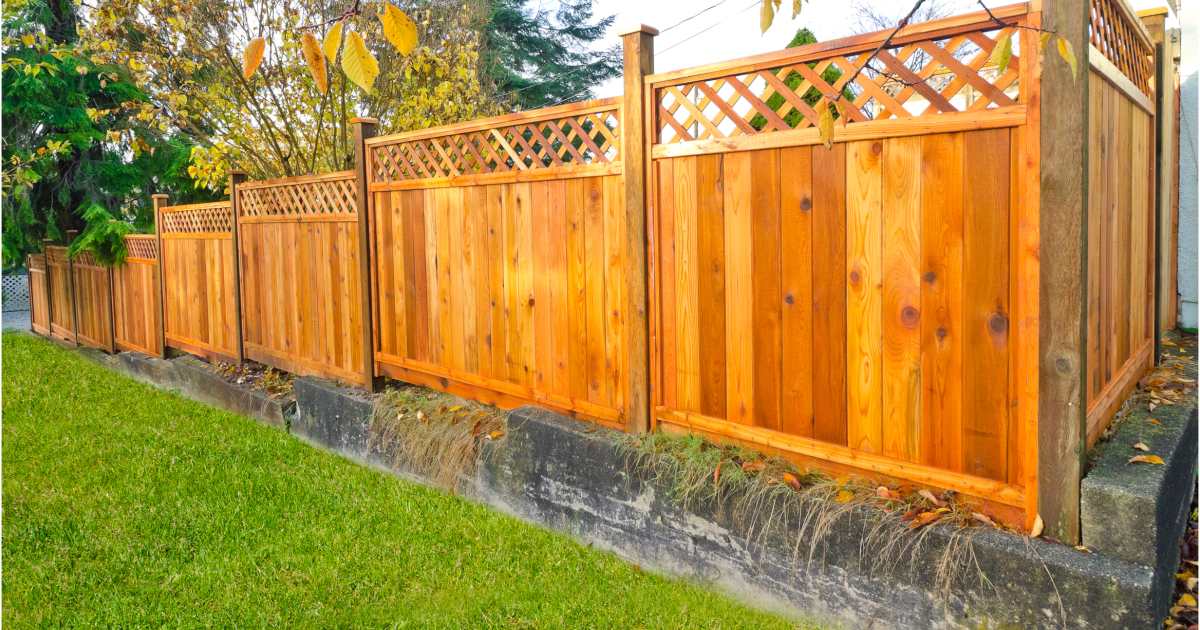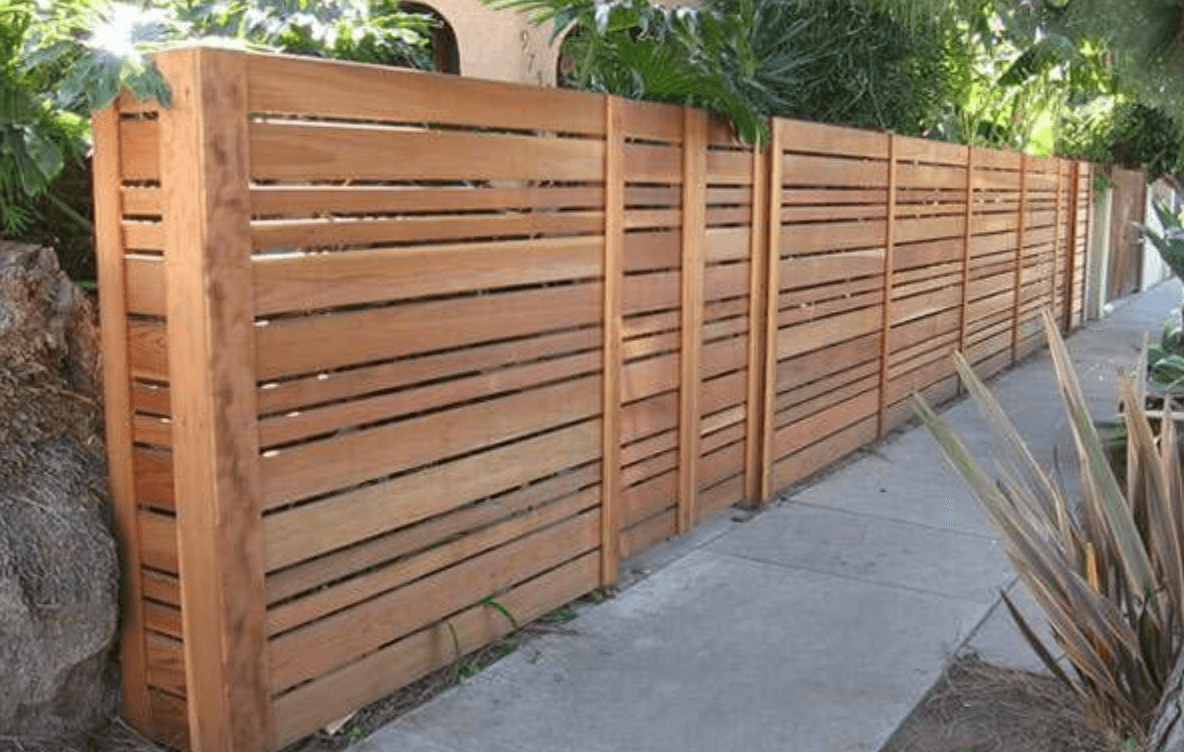All Categories
Featured
When selecting a fence for your property, it's necessary to take into consideration elements like expense, toughness, upkeep, and aesthetic allure. Three of the most preferred products for residential and commercial fencings are vinyl, wood, and light weight aluminum.
Wood Fencing. Pros:
![]()
Natural Visual: Wood fencings are recognized for their timeless, natural appearance. They can quickly mix right into most landscapes and boost the appeal of your home or organization. Whether you're going for a rustic appearance or a more polished finish, timber can be tailored with paint, stain, or sealer. Personalization: Wood is one of one of the most functional materials, enabling for a wide range of styles, such as picket fences, personal privacy fencings, and ranch-style rooms. It's very easy to readjust the design to fit the specific demands of your residential property. Budget friendly: Typically, timber fencings come with a reduced first expense contrasted to plastic or aluminum, making them an economical option for those on a budget. Disadvantages:
Maintenance Requirements: Wood fencings need normal maintenance to keep their beauty and performance. This consists of discoloration or paint to secure against rot, termites, and climate damage. Without correct care, wood can weaken with time. Much Shorter Life Expectancy: Compared to vinyl or aluminum, timber fencings tend to have a much shorter life expectancy, specifically in areas with extreme weather. Rough problems, such as hefty rainfall, moisture, or snow, can cause wood to deteriorate much more swiftly. Prone to Damage: Wood fencings are prone to harm from insects, including termites, along with natural wear from weather. They may additionally warp or fracture otherwise properly maintained. Plastic Fence. Pros:
Low Upkeep: Among the primary advantages of vinyl fences is that they call for minimal maintenance. Unlike wood, vinyl does not need to be repainted, sealed, or discolored. It's resistant to fading, discoloration, and cracking, which saves time and cash on maintenance. Longevity: Vinyl is known for its capacity to hold up against severe weather without wearing away. It's unsusceptible pests like termites, and its resistance to wetness and UV rays guarantees it stays looking great for years. Resilient: A vinyl fencing can last as much as thirty years or even more, making it a great long-term investment. Several producers supply service warranties, better boosting its worth. Range of Styles: Plastic fencings are readily available in numerous shades and styles, consisting of those that mimic wood. You can pick from personal privacy, picket, or decorative designs, giving flexibility to match your home or organization. Cons:
![]()
Higher Upfront Price: Vinyl fencings tend to have a greater preliminary price than timber. While the long-lasting financial savings on maintenance are significant, the ahead of time financial investment might be a deterrent for some home owners. Minimal Customization: Plastic fencings come in common styles, and while styles and shades are diverse, you may not have as much adaptability for personalization contrasted to timber. Breaking in Cold Climates: While plastic is sturdy, in incredibly cold environments, it can come to be breakable and split upon influence, which might be bothersome in locations with severe winters months. Light weight aluminum Fencing. Pros:
Low Upkeep: Aluminum fences are understood for their low-maintenance needs. Unlike wood, aluminum does not rust or rust, and it doesn't need to be repainted or secured. This makes it a fantastic selection for those who desire a problem-free option. Toughness and Strength: Light weight aluminum is a robust material that stands well to harsh climate conditions. It's an excellent option for coastal locations where deep sea corrosion is an issue, as it's resistant to corrosion. Visual Appeal: Light weight aluminum fences supply a clean, elegant appearance, usually utilized for ornamental purposes. They're offered in numerous styles, including ornamental layouts, and can include a high-end feel to your property. Protection: Light weight aluminum fencings are resilient and offer terrific safety and security, specifically when set up with locks or gateways. Their tough construction gives a trustworthy obstacle versus undesirable entry. Disadvantages:
![]()
Higher Preliminary Expense: Aluminum fences often tend to be a lot more expensive than wood, particularly if you go with decorative designs. The ahead of time expense may be expensive for some. Much Less Personal privacy: Aluminum fences commonly have bigger spaces in between the slats, which implies they provide less personal privacy than timber or plastic fences. Aluminum may not be the best alternative if seclusion is a top priority. Nicking Concerns: While light weight aluminum is rust-resistant, it is vulnerable to denting or flexing if struck with pressure. For instance, a lorry mishap or heavy impact can create lasting damage to the fence. Which Fencing Product is Right for You? Choosing the appropriate fence depends upon numerous variables, including your budget, style choices, upkeep ability, and the atmosphere in which you live. If you want a natural appearance and are gotten ready for routine maintenance, wood could be the right choice. Plastic is an excellent choice if low-maintenance and longevity are your concerns. For those that prefer a smooth, modern-day appearance with very little treatment, light weight aluminum offers a lasting, safe and secure option.
Ultimately, each fence material has its benefits and drawbacks, so it's important to assess what matters most for your particular demands. Think about the climate, the level of privacy you need, and how much maintenance you're ready to dedicate to, and you'll find the ideal fencing for your building.
Wood Fencing. Pros:

Natural Visual: Wood fencings are recognized for their timeless, natural appearance. They can quickly mix right into most landscapes and boost the appeal of your home or organization. Whether you're going for a rustic appearance or a more polished finish, timber can be tailored with paint, stain, or sealer. Personalization: Wood is one of one of the most functional materials, enabling for a wide range of styles, such as picket fences, personal privacy fencings, and ranch-style rooms. It's very easy to readjust the design to fit the specific demands of your residential property. Budget friendly: Typically, timber fencings come with a reduced first expense contrasted to plastic or aluminum, making them an economical option for those on a budget. Disadvantages:
Maintenance Requirements: Wood fencings need normal maintenance to keep their beauty and performance. This consists of discoloration or paint to secure against rot, termites, and climate damage. Without correct care, wood can weaken with time. Much Shorter Life Expectancy: Compared to vinyl or aluminum, timber fencings tend to have a much shorter life expectancy, specifically in areas with extreme weather. Rough problems, such as hefty rainfall, moisture, or snow, can cause wood to deteriorate much more swiftly. Prone to Damage: Wood fencings are prone to harm from insects, including termites, along with natural wear from weather. They may additionally warp or fracture otherwise properly maintained. Plastic Fence. Pros:
Low Upkeep: Among the primary advantages of vinyl fences is that they call for minimal maintenance. Unlike wood, vinyl does not need to be repainted, sealed, or discolored. It's resistant to fading, discoloration, and cracking, which saves time and cash on maintenance. Longevity: Vinyl is known for its capacity to hold up against severe weather without wearing away. It's unsusceptible pests like termites, and its resistance to wetness and UV rays guarantees it stays looking great for years. Resilient: A vinyl fencing can last as much as thirty years or even more, making it a great long-term investment. Several producers supply service warranties, better boosting its worth. Range of Styles: Plastic fencings are readily available in numerous shades and styles, consisting of those that mimic wood. You can pick from personal privacy, picket, or decorative designs, giving flexibility to match your home or organization. Cons:

Higher Upfront Price: Vinyl fencings tend to have a greater preliminary price than timber. While the long-lasting financial savings on maintenance are significant, the ahead of time financial investment might be a deterrent for some home owners. Minimal Customization: Plastic fencings come in common styles, and while styles and shades are diverse, you may not have as much adaptability for personalization contrasted to timber. Breaking in Cold Climates: While plastic is sturdy, in incredibly cold environments, it can come to be breakable and split upon influence, which might be bothersome in locations with severe winters months. Light weight aluminum Fencing. Pros:
Low Upkeep: Aluminum fences are understood for their low-maintenance needs. Unlike wood, aluminum does not rust or rust, and it doesn't need to be repainted or secured. This makes it a fantastic selection for those who desire a problem-free option. Toughness and Strength: Light weight aluminum is a robust material that stands well to harsh climate conditions. It's an excellent option for coastal locations where deep sea corrosion is an issue, as it's resistant to corrosion. Visual Appeal: Light weight aluminum fences supply a clean, elegant appearance, usually utilized for ornamental purposes. They're offered in numerous styles, including ornamental layouts, and can include a high-end feel to your property. Protection: Light weight aluminum fencings are resilient and offer terrific safety and security, specifically when set up with locks or gateways. Their tough construction gives a trustworthy obstacle versus undesirable entry. Disadvantages:

Higher Preliminary Expense: Aluminum fences often tend to be a lot more expensive than wood, particularly if you go with decorative designs. The ahead of time expense may be expensive for some. Much Less Personal privacy: Aluminum fences commonly have bigger spaces in between the slats, which implies they provide less personal privacy than timber or plastic fences. Aluminum may not be the best alternative if seclusion is a top priority. Nicking Concerns: While light weight aluminum is rust-resistant, it is vulnerable to denting or flexing if struck with pressure. For instance, a lorry mishap or heavy impact can create lasting damage to the fence. Which Fencing Product is Right for You? Choosing the appropriate fence depends upon numerous variables, including your budget, style choices, upkeep ability, and the atmosphere in which you live. If you want a natural appearance and are gotten ready for routine maintenance, wood could be the right choice. Plastic is an excellent choice if low-maintenance and longevity are your concerns. For those that prefer a smooth, modern-day appearance with very little treatment, light weight aluminum offers a lasting, safe and secure option.
Ultimately, each fence material has its benefits and drawbacks, so it's important to assess what matters most for your particular demands. Think about the climate, the level of privacy you need, and how much maintenance you're ready to dedicate to, and you'll find the ideal fencing for your building.
Latest Posts
Experience Your Financial Partner at WyHy – Wyoming’s Best Banking Choice for Your Future
Published May 26, 25
1 min read
Explore Your Financial Partner at WyHy – Top Benefits for Members
Published May 25, 25
1 min read
Protect and Enhance Your Home with Weathercraft's House siding Providers
Published May 23, 25
1 min read
More
Latest Posts
Experience Your Financial Partner at WyHy – Wyoming’s Best Banking Choice for Your Future
Published May 26, 25
1 min read
Explore Your Financial Partner at WyHy – Top Benefits for Members
Published May 25, 25
1 min read
Protect and Enhance Your Home with Weathercraft's House siding Providers
Published May 23, 25
1 min read